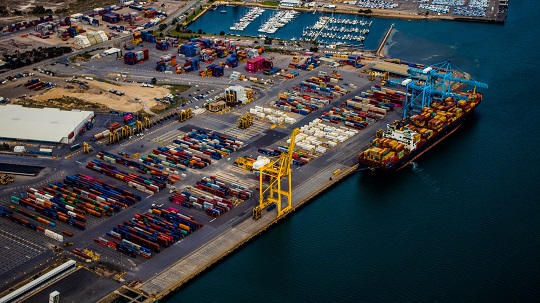In today’s fast-paced global business landscape, how you manage your supply chain can make or break your success. As you aim to stay ahead in the competitive race, the importance of running an efficient supply chain has never been more critical.
This blog post is all about helping you navigate the complexities with the top 10 best practices for cutting down on supply chain costs. We’ll dive into strategies that not only boost transparency but also simplify processes and promote collaborative relationships.
Before we go further into this topic, don’t forget to follow my LinkedIn account. You’ll get more helpful insights on supply chain management there.
Table of Contents
Understanding Your Supply Chain Structure
To kick off successful cost-cutting strategies, it’s crucial for you to deeply understand the structure of your supply chain. Take a close look at your supply chain network, examining it thoroughly to pinpoint inefficiencies and spot areas ready for improvement.
This means scrutinizing every step, from sourcing raw materials to delivering final products to your customers. By taking this comprehensive approach, you set the stage for strategic interventions and optimization efforts, paving the way for more efficient and streamlined operations.
When it comes to reducing supply chain costs, conducting a detailed cost analysis is your go-to strategy. This entails identifying high-cost areas throughout the entire supply chain, covering everything from procurement and transportation to warehousing and distribution.
By implementing transparency measures, you ensure that everyone involved is in the loop about cost structures, promoting accountability and informed decision-making.
This dedication to transparency not only boosts cost management but also nurtures a culture of continuous improvement. By regularly examining and refining your cost structures, you can stay agile in response to market changes, optimizing your supply chain for long-term efficiency and competitiveness.
Cost Analysis and Transparency
At the core of successfully reducing costs in your supply chain is the need for you to conduct a thorough cost analysis.
This means pinpointing and examining high-cost areas with precision across the entire spectrum of your supply chain, covering aspects like procurement, transportation, warehousing, and distribution.

To strengthen this process, it’s crucial for you to implement transparency measures, ensuring that everyone involved has a clear understanding of the cost structures.
This not only promotes accountability within your organization but also empowers stakeholders like you to make informed decisions based on a comprehensive understanding of the financial intricacies associated with your supply chain.
Transparency acts as a catalyst for better decision-making by providing a shared understanding of the financial landscape among all parties involved, including you.
By bringing clarity to your cost structures, your business creates an environment that encourages responsibility and strategic thinking. This dedication to transparency not only improves the efficiency of your cost management but also lays the foundation for a culture of continuous improvement.
In this dynamic context, your informed decision-making becomes an ongoing process, allowing your organization to adapt swiftly to changing market conditions and optimize your supply chain for sustained effectiveness.
Streamlining Processes for Efficiency
Efficiency in your supply chain significantly hinges on your strategic approach to streamlining processes. An essential part of this strategy is reducing lead times and eliminating bottlenecks, actions that collectively enhance your overall operational efficiency.
The utilization of lean principles is crucial in guiding you to identify and eliminate wasteful practices, optimizing your processes for maximum output while conserving resources.
This commitment to efficiency extends beyond mere isolated improvements; it underscores the importance of incorporating continuous process improvement into your organizational culture.
This cultural integration ensures your adaptability to evolving market conditions and serves as a proactive response to the dynamic challenges within the supply chain landscape.
When you incorporate lean principles, it’s not just about addressing immediate inefficiencies; it’s about laying the foundation for sustained effectiveness.
By consistently identifying and rectifying wasteful elements within your processes, you not only strengthen your operational efficiency but also nurture a mindset that prioritizes ongoing improvements.

This proactive approach positions your organization not only to meet the current demands of the market but also to anticipate and navigate future challenges seamlessly.
In essence, streamlining processes becomes a strategic imperative for you, aiming not just for immediate gains but also the long-term resilience necessary in a constantly evolving business environment.
You might also like:
- Navigating Innovation: Creating a New Product vs. Riding the Trend Wave
- The Contradiction in Supply Chain Experience: Revealing Both Success and Failure
Effective Inventory Management
The impact of inventory management on your supply chain costs is undeniable, and achieving the right balance between maintaining optimal stock levels and avoiding excess inventory is crucial for you.
Utilizing advanced inventory management systems becomes instrumental in this pursuit, offering real-time tracking of stock levels, precise demand forecasting, and an effective way to minimize carrying costs.
Adopting just-in-time inventory practices is a strategic move that significantly eases the financial burden associated with maintaining surplus stock.
By leveraging these sophisticated inventory management tools, you not only optimize your stock levels but also enhance your responsiveness to market fluctuations.
The ability to accurately predict demand and adjust your inventory accordingly not only streamlines your operations but also reduces the risk of overstocking.
Ultimately, this contributes to creating a more cost-effective and agile supply chain for you.
Recognizing the critical role of these inventory management practices in aligning with real-time demands underscores their importance not only in reducing costs but also in ensuring the adaptability and competitiveness of your overall supply chain.
Collaborative Relationships
Cultivating strong and collaborative relationships with your suppliers and manufacturers is a strategic necessity for reducing costs, and you play a crucial role in this process. Initiating open lines of communication, negotiating favorable terms, and actively seeking opportunities for joint process improvements are key actions in this approach.

The collaborative dynamic forged through such partnerships goes beyond mere transactional interactions, creating a sense of partnership that aligns the interests of all stakeholders, including yours. This alignment establishes a mutually beneficial environment, leading to a win-win situation that positively impacts the bottom line for both parties involved.
In the realm of supply chain management, your ability to collaborate becomes a linchpin for success. Establishing relationships characterized by transparency and shared objectives enables your business to navigate challenges more effectively and capitalize on opportunities for efficiency improvement.
The resulting synergy not only streamlines your operations but also lays a foundation for long-term sustainability.
Your collaborative efforts continue to drive innovation and cost reduction within the supply chain ecosystem, ensuring ongoing success and resilience.
Embrace Sustainable Practices
Sustainability is more than just a buzzword; it’s a critical element in today’s supply chain management, and you have a pivotal role in embracing it. The implementation of eco-friendly initiatives goes beyond fulfilling a commitment to corporate social responsibility; it serves as a strategic avenue for you to reduce costs.
When you adopt sustainable practices, like optimizing transportation routes to cut emissions and minimizing packaging waste, you play a key part in realizing substantial cost savings while simultaneously enhancing your brand image positively.
In the modern landscape of supply chain management, sustainability becomes a multifaceted asset that brings together ethical considerations with tangible business benefits.
As you integrate eco-friendly initiatives, you not only contribute to environmental stewardship but also position yourself for long-term financial gains.
Take, for example, the optimization of transportation routes, which not only lessens the ecological impact but also reduces your fuel costs.
Similarly, the reduction of packaging waste not only aligns with sustainability goals but also trims expenses tied to excess materials.
In essence, sustainability becomes a symbiotic force where your environmental conscientiousness aligns harmoniously with economic prudence within the supply chain domain.
Data-Driven Decision Making
In today’s era of big data, your ability to harness analytics becomes a powerful tool for making informed decisions in supply chain management.
When you utilize data analytics, you, as a supply chain professional, gain real-time insights that empower you to discern patterns, foresee trends, and enact proactive strategies.

This data-driven decision-making process is crucial for implementing cost reduction strategies because it relies on concrete evidence to ensure that your interventions are not only targeted but also highly effective.
The integration of data analytics into your supply chain decision-making marks a significant shift, offering you a departure from traditional approaches toward a more dynamic and responsive methodology.
Your ability to extract actionable insights from vast datasets not only enhances the precision of your decision-making but also enables you to stay ahead of market dynamics.
This strategic alignment with data not only streamlines your operations but also positions your business to proactively address challenges, fostering a culture of continuous improvement and adaptability within the complex landscape of supply chain management.
You might also like:
- Unveiling the Hidden Costs: The Impact of Meaningless Actions on Waste in Supply Chain Management
- Exploring the 35 Essential Manufacturing Expenses You Must Consider
Invest in Employee Training
The effectiveness of your supply chain isn’t solely reliant on advanced technologies and streamlined processes; it’s also deeply connected to the competence and expertise of your workforce.
When you commit to investing in employee training programs, you equip your team with the necessary skills to adeptly navigate the intricacies of modern supply chain management.
A well-trained personnel cadre, which includes you and your team, becomes inherently more capable of making informed decisions, leading to a decrease in errors and an overall boost in productivity.
Recognizing the symbiotic relationship between the capability of your workforce and the efficiency of your supply chain is crucial, especially if you’re aiming to thrive in a competitive landscape.
Employee training isn’t just an expense; it’s a strategic asset that enhances the collective skill set within your organization and instills a culture of continuous learning.

With up-to-date knowledge and honed skills, your workforce transforms into an agile and responsive component, capable of adapting to evolving market conditions and optimizing the supply chain for sustained productivity gains.
Essentially, when you invest in employee training, you’re making an investment in the resilience and adaptability of your entire supply chain ecosystem, including yourself and your team.
Continuous Monitoring and Improvement
In the dynamic realm of supply chain management, it’s crucial for you to continually monitor and stay proactive in addressing challenges and seizing opportunities. You play a vital role in this process by consistently evaluating key performance indicators, monitoring the effectiveness of processes, and actively seeking feedback from stakeholders.
The commitment to embracing a culture of continuous improvement is paramount, creating an environment that encourages you and your teams to consistently identify areas for enhancement and implement strategic changes to optimize costs over time.
In the ever-evolving landscape of supply chain dynamics, your dedication to continuous monitoring and improvement becomes a guiding force for navigating complexity.
Regular assessments of performance indicators not only offer insights into the effectiveness of your current strategies but also lay the groundwork for your informed decision-making.
By instilling a culture of continuous improvement, you’re creating a proactive and adaptive framework. This ensures that you and your teams are not only responsive to existing challenges but also well-prepared to anticipate and address potential future hurdles.
This proactive approach, driven by you, not only optimizes costs but also positions your supply chain for sustained efficiency and resilience in the face of ongoing changes.
See the Savings Stack Up!
By adopting these best practices, you can expect your business to witness a tangible decrease in supply chain costs, coupled with improvements in efficiency and competitiveness.
The combined impact of understanding supply chain structures, conducting thorough cost analyses, streamlining processes, and incorporating sustainable practices contributes to establishing a robust and cost-effective supply chain ecosystem.

This comprehensive approach to supply chain management, driven by you, not only optimizes financial aspects but also enhances the overall resilience of your supply chain.
The strategic integration of understanding structures and implementing data-driven cost analyses, with you at the helm, ensures a targeted and effective reduction in expenses.
Simultaneously, as you streamline processes and incorporate sustainable practices, you not only contribute to cost savings but also foster an adaptive and environmentally conscious supply chain.
In essence, these practices collectively fortify your supply chain’s ability to navigate challenges, promote sustainability, and stand as a competitive force in the ever-evolving business landscape.
Conclusion
In the ever-changing landscape of global commerce, achieving mastery in supply chain efficiency is a crucial requirement for your success.
The comprehensive compilation of the top 10 best practices in this blog acts as a detailed roadmap, providing you with a strategic guide to simultaneously navigate supply chain costs and enhance overall performance.
Covering everything from a deep understanding of supply chain structures to the incorporation of data-driven decision-making, these practices collectively present a holistic framework for establishing a flexible and cost-effective supply chain.
The adoption of these strategies goes beyond immediate cost savings; it strategically positions your company for long-term success in an increasingly competitive marketplace.
As you implement these best practices, you not only effectively tackle current challenges but also fortify your ability to adapt to future shifts.
This holistic approach embodies the essence of agility, empowering your company to thrive amid uncertainties and consistently deliver superior supply chain performance.
Ultimately, this strategic alignment ensures that you are well-positioned not only to navigate the current competitive landscape but also to chart a course toward sustained success in the dynamic global business arena.
I hope you find it helpful!
Please share this article with your colleagues so they can also benefit. For more insights on supply chain management, follow my LinkedIn account. You’re free to use all articles on this blog for any purpose, even for commercial use, without needing to give credit.

 by
by 
